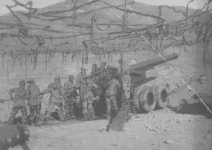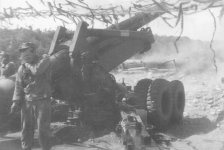Yawl are bring back old memories of 1966 Ft. Sill crew training on the Howitzer. I remember the "stick" in the gun pit, the fuzes and battery firing, and the hectic activity around loading, setting, firing, etc. but the part about actually assembling the round is fuzzy after all these years, but as I recall (may not be accurate cause I was changed by a PFC at receiving station to rifleman....never saw arty again in any official capacity) the gun crew leader after receiving mission instructions over the field line, would literally "yell out" numbers and they had a very distinct "order", and if I also recall there was one for the "charge" (example "charge 4), which meant you grabbed 4 bags of powder and placed them in the primed empty brass, while another crew member was Setting" the fuse on top of the actual round, then the "loader would get handed the fully assembled live round, and he shoved it onto the loading tray, up into the breech, while the "gunner" had his hand on the lanyard.
Like I said before in this post, I thought it was complicated, but if done right to the letter..........very effective. We really didn't have time to think about kill radius, or deflection....those things were figured out between the FO and the battery commander....but us grunts just did our job, and soldiered on....I also remember fingers going up (no....not just a certain one) after the first round on the way because none of us could hear ****...and nothing worse for downrange friendlies than a powder loader who "short-bagged" a round by missing the charge number which set the distance range the gun would fire. In training they intentionally had one gun in the battery "short-bag" sometimes to be sure that the loaders were watching their crew leader, and not an adjacent gun, and to give the FO's also in training the experience of seeing their call in's go wrong. A lot of "choice words and gestures" would follow during those "tests".



